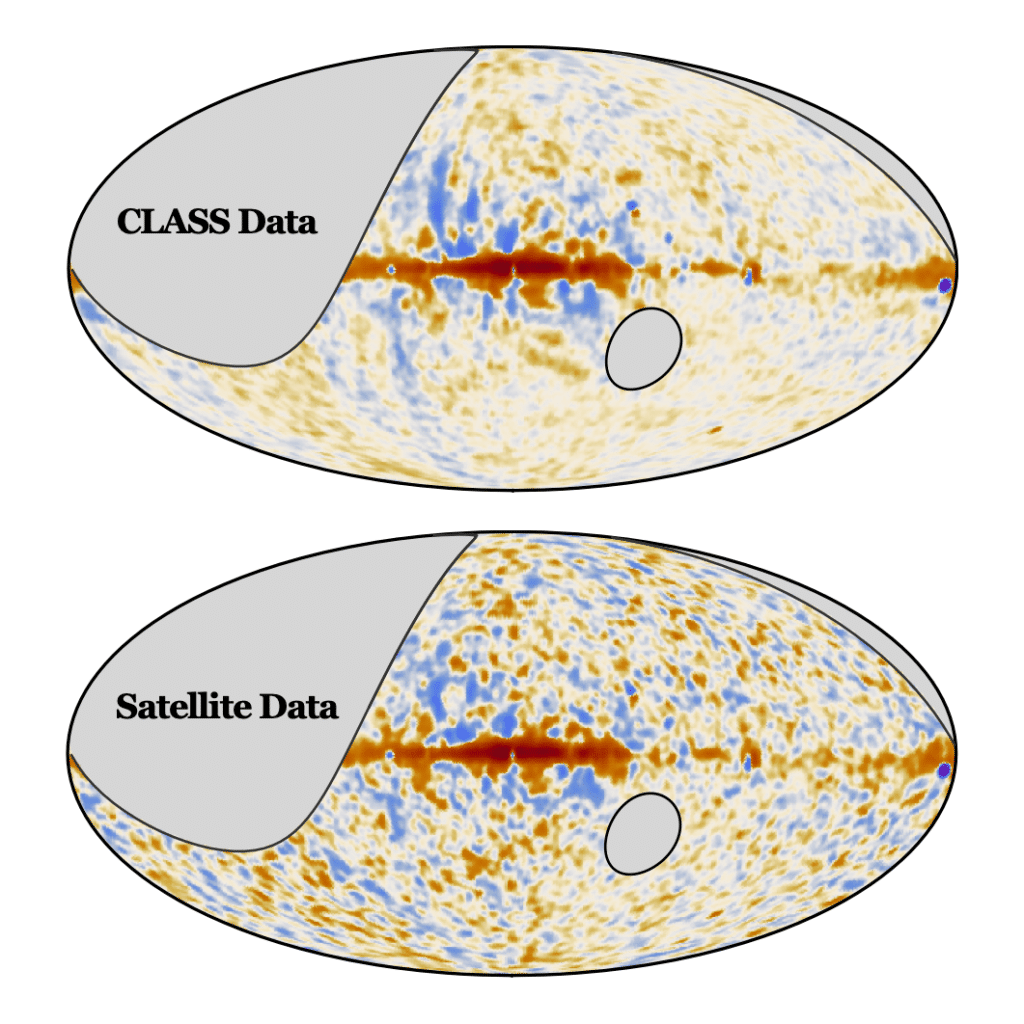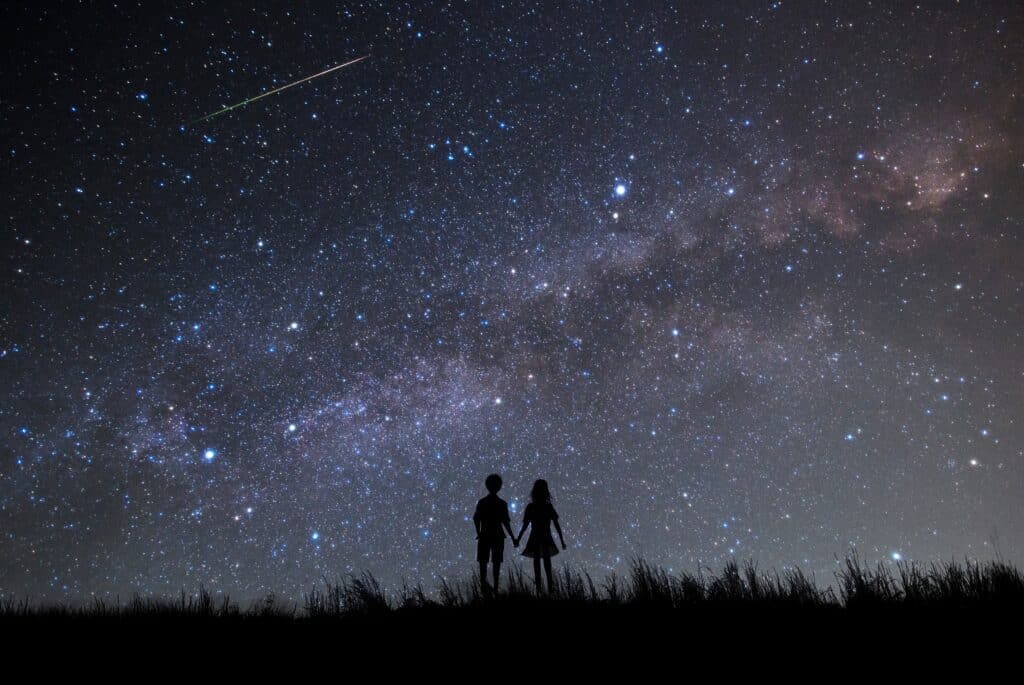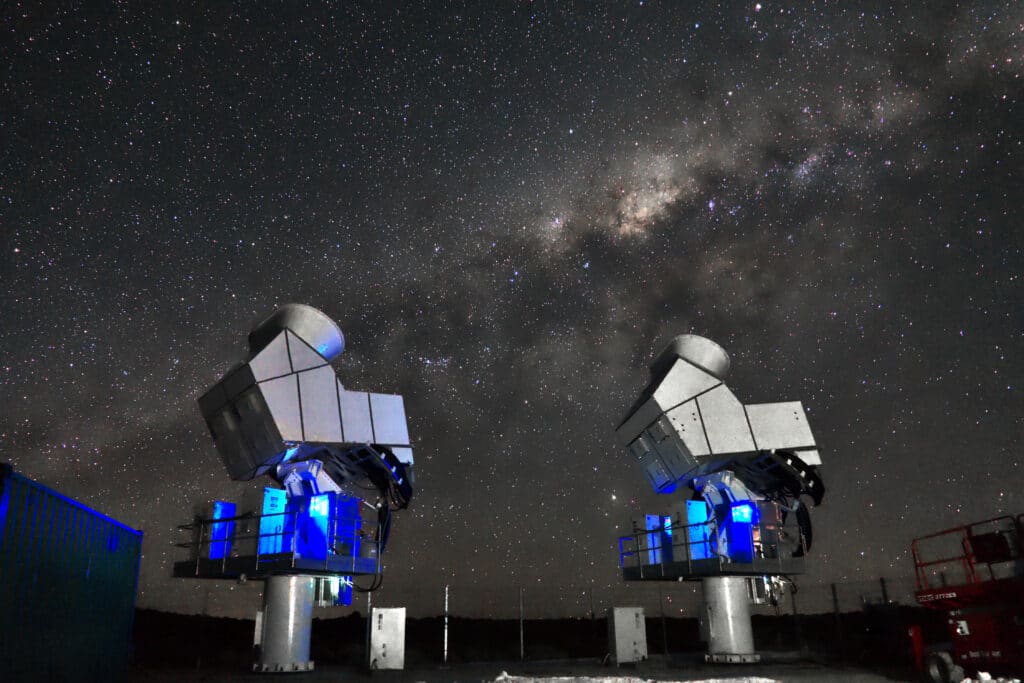In the remote Andes mountains of northern Chile, a small but powerful observatory is helping astronomers unravel the mysteries of the universe’s origins. The U.S. National Science Foundation’s Cosmology Large Angular Scale Surveyor (CLASS) project, led by astrophysicists from Johns Hopkins University, has achieved a significant milestone by creating detailed maps covering 75 percent of the sky. These maps are a crucial step forward in our quest to understand the universe’s evolution from the Big Bang to the present day.
The CLASS team’s work focuses on the cosmic microwave background (CMB) — essentially the afterglow of the Big Bang. This radiation is a faint echo from the universe’s infancy, carrying information about its earliest moments. By measuring the polarization of microwaves — that is, the direction in which these energy waves “wiggle” — researchers can glean insights into the physics and history of the cosmos.

“By studying the polarization of the cosmic microwave background, astrophysicists can infer what the universe must have been like at earlier times,” says study co-author Tobias Marriage, a Johns Hopkins professor of physics and astronomy, in a media release. “Astrophysicists can go back to very, very early times — the initial conditions, the very first moments where matter in the universe and the distribution of energy was first put in place — and can connect all that to what we see today.”
One of the challenges in studying the CMB is filtering out interference from our own galaxy. The Milky Way emits its own microwaves, which can obscure the faint signals from the early universe. The new maps created by CLASS have significantly improved our ability to distinguish between these different sources of microwave radiation. This advancement is critical for a better understanding of the cosmic microwave background and, by extension, the universe’s early days.
The CLASS observatory’s achievements are notable not only for the scientific insights they provide but also for the technical innovations that made them possible. The observatory used state-of-the-art technologies, including smooth-walled feeds, custom-designed detectors, and new polarization modulators. These tools, developed in collaboration between NASA and Johns Hopkins, have enhanced the observatory’s ability to measure microwave polarization with unprecedented precision.
“It’s very important to know the brightness of emission from our Milky Way galaxy because this is what we have to correct for to perform a deeper analysis of the cosmic microwave background,” explains study lead author Joseph Eimer, an astrophysicist at Johns Hopkins. “CLASS is very successful in characterizing the nature of that signal so that we can recognize it and remove those contaminants from observations. The project is at the forefront of pushing ground-based polarization measurements in the largest scales.”

The CLASS project sets a new benchmark for ground-based observations of the universe’s largest scales. Its location in the Parque Astronómico Atacama, under the auspices of the Agencia Nacional de Investigación y Desarrollo, provides an ideal setting for such groundbreaking work. The high altitude and clear skies of northern Chile offer optimal conditions for observing the cosmos.
This research not only deepens our understanding of the universe’s earliest moments but also paves the way for future investigations. With ongoing observations and improvements to instrumentation, the CLASS team and other astronomers worldwide will continue to explore the cosmic background radiation, revealing more about how our universe came to be and its fundamental nature.
The study is published in The Astrophysical Journal.












